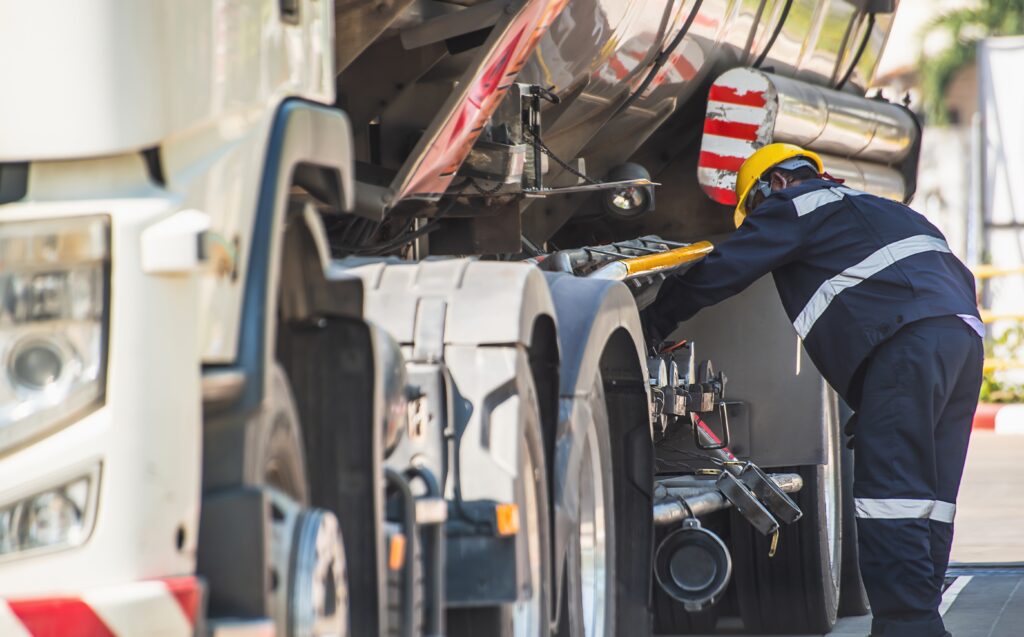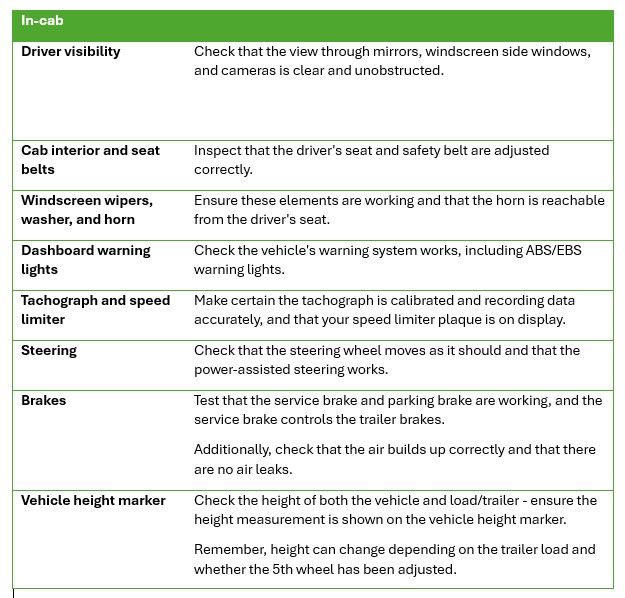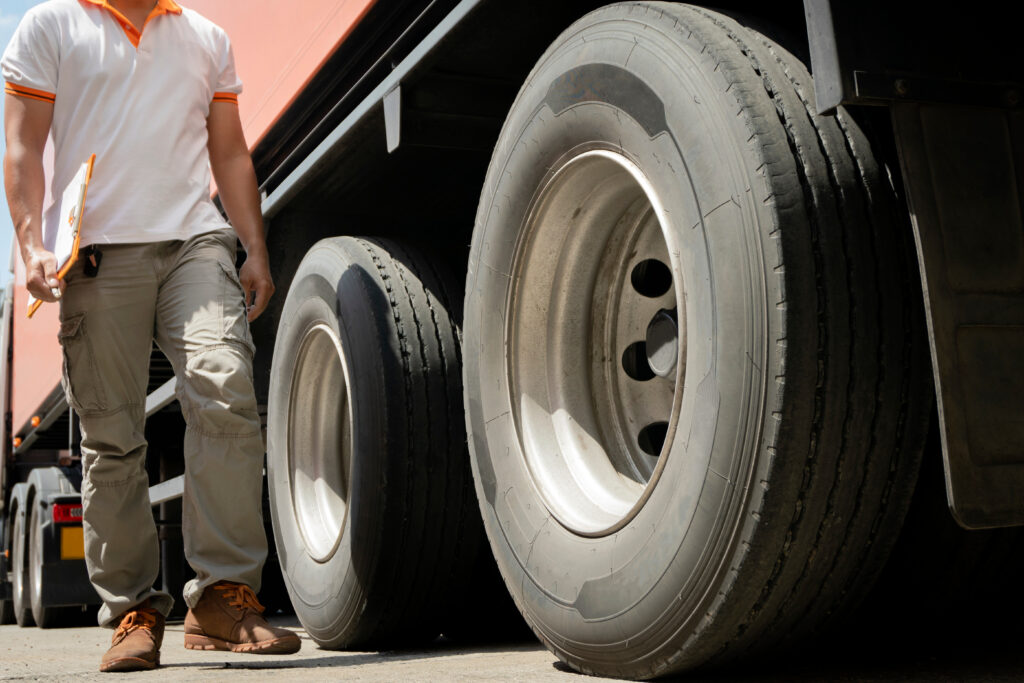Table of Contents
HGV walkaround checks are an integral part of the day-to-day life of an HGV driver for both safety and legal reasons.
But what are HGV daily walkaround checks, why are they needed, and who should complete them?Join our HGV training experts as they go through this everyday essential in more detail to answer your most pertinent questions in this article.

What are HGV vehicle checks?
HGV vehicle checks are several walkaround inspections vehicle operators must complete to ensure their lorry is safe to drive.
These crucial checks are a vital part of commercial vehicle safety and help to prevent incidents such as collisions, breakdowns, bridge strikes, and more!
These checks can also stop you from receiving hefty fines or more severe penalties, so are well worth the time, but we’ll explore more about this later on.ontrol a variety of vehicles? If combining driving and lifting is for you, browse our HIAB training to find out more! .
How often should a HGV be inspected?
HGVs must be examined daily to ensure its safe to drive for the day ahead.
Heavy vehicle checks must be conducted every day This is because defects may have occurred since the truck’s last inspection and may not have been noticed as they happened.

How often should a HGV be inspected?
HGVs must be examined daily to ensure its safe to drive for the day ahead.
Heavy vehicle checks must be conducted every day This is because defects may have occurred since the truck’s last inspection and may not have been noticed as they happened.



After assessing the above, your vehicle check should be complete.
What happens if defects are found?
Suppose any safety defects are found during the check. In that case, they must be recorded, reported, and fixed before the HGV can be considered roadworthy again – for the sake of yourself and other road users, you mustn’t drive the vehicle until the issues have been addressed.
When reporting defects, record the vehicle registration, date details, and information about the issues and hand them over to the individual in charge of vehicle safety in your organisation.
Here’s a GOV.UK goods vehicle defect report template if you haven’t already got one.

Who should complete HGV daily walkaround checks and is it a legal responsibility?
Drivers are legally responsible for conducting all the relevant walkaround checks. If there’s more than one driver, each driver taking charge should perform these checks.
The police and Driver and Vehicle Standards Agency (DVSA) officers can pull you over at any time to inspect your HGV. If problems are identified, you can be prevented from driving until you address them, a fine may be issued, and you could even gain penalty points on your licence.
HGV drivers could also be instructed to attend a driver conduct hearing if they’ve committed offences relating to drivers’ hours and tachographs – this could have been a result of failing to calibrate their tachograph device during their walkaround checks.
How long should an HGV walkaround take?
An HGV daily walkaround check should take 15 minutes on average, although this may vary depending on any defects detected.
With this in mind, it’s important to be on time for your shift so you have adequate time to perform these critical checks and report defects to your transport manager. The earlier they’re made aware of issues, the quicker a solution can be found so you can continue your work for the day.

HGV trailer MOT checklist
In addition to daily walkaround checks for commercial vehicles, each must have a yearly MOT like a standard car. MOTs are performed by qualified mechanics and offer a more complete evaluation of an HGVs roadworthiness.
If your vehicle fails its MOT, you won’t be able to drive it legally until any issues are addressed.
The following components will be examined:
- Brakes and brake systems
- Lights and indicators
- Exhaust emissions
- Suspension
- Bodywork
- Steering
- Windscreen
- Tyres
For a deeper exploration into HGV MOTs, take a look at our How to check your HGV MOT status blog.
Speak with our experts today
From LGV and HGV courses to specialist and CPC training, we provide hundreds of aspiring drivers each year with the experience and qualifications to start a brand new career on the road.
Interested in hearing about the HGV training services we offer here at HGV Training Network? Feel free to call us on 0800 254 5007 or email us at contact@hgvtrainingnetwork.com and we’ll get back to you as soon as we can.








